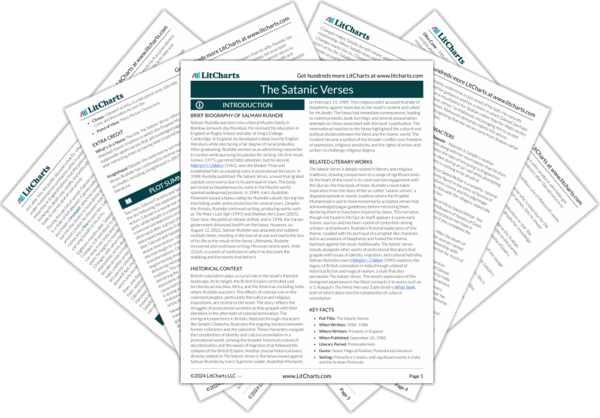Mishal’s pragmatic response to Saladin’s predicament illustrates that she understands him far more than she fears him. Saladin, his transformation now complete, wants to find Gibreel as soon as possible to get revenge. However, instead, Mishal arranges for him to go to Club Hot Wax, where he will be surrounded by wax figures that represent British culture. Notably, Saladin is not important enough to be made into a wax figure and, more importantly, he is not “English” enough to make it into the museum.
